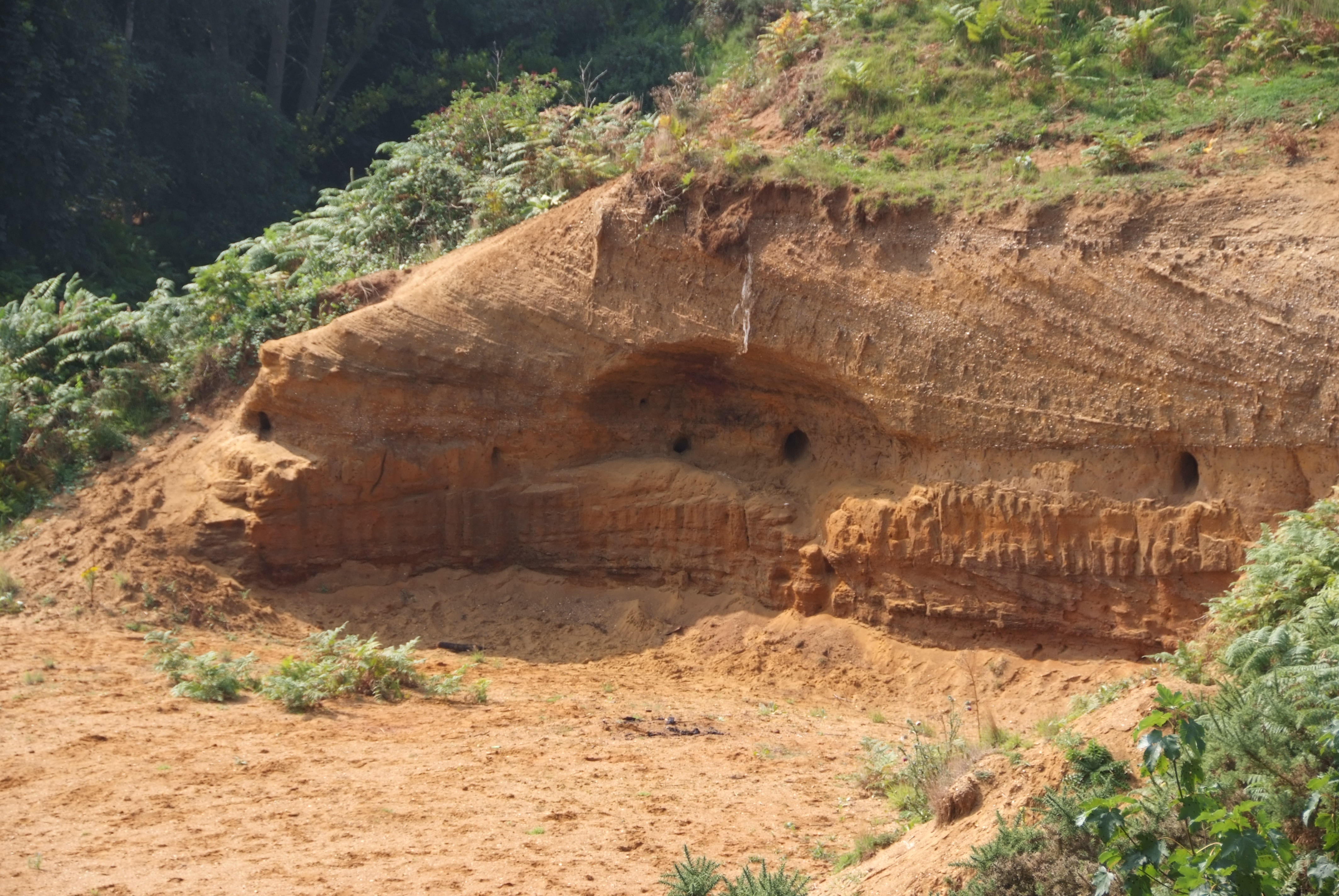The pit at Capel Green provides an excellent opportunity to collect shells from the Red Crag. It is next to the road and disused, but has two large, clear faces full of shells. In addition, shells can be collected from the quarry floor or the nearby spoil heap. Evidence of cross bedding is also clearly visible.
DIRECTIONS
♦ Capel Green is to the south of Butley and to the west of Butley Priory.
♦ When driving from the north, the pit can be found alongside the road, just after the crossroads. You will see a signpost saying ‘Quarry Workings’, with plenty of places to park nearby.
♦ You can access the quarry from the roadside and the first face is visible from the road, but the second is round the corner from the first. Both faces are full of shells.
♦ The quarry is on the edge of Rendlesham Forest.
♦ Ref: 52.09205°N, 1.45350°E
PROFILE INFO
FIND FREQUENCY: ♦♦♦ – You will certainly find a wide range of Red Crag shells at this site and you are sure to come away with a nice collection. However, bone fragments are uncommon.
CHILDREN: ♦♦ – Quarries, either working or disused, are no places for children as they present many dangers. Therefore, this site is not recommended for children.
ACCESS: ♦♦♦♦ – Capel Green is easy to find. You can park opposite the disused quarry and walk straight in. However, there is a slope that you need to descend, but it is not too steep.
TYPE: – Fossils are found either on the quarry floor, in the cliff face or in the heap of shells. Collecting from the quarry floor is easier and much safer, and you should not dig into the cliff faces.
FOSSIL HUNTING
Capel Green is rich in shells from the Red Crag. One of the most common finds is the bivalve, Macoma, but gastropods are also very common.
Shells are best collected from the quarry floor, where the rain has washed them out and they are easier to see. You can also collect from the spoil heap. Be sure to take some paper to wrap your finds and containers to put them in.

GEOLOGY
The Red Crag sediments at Capel Green are Pliocene in age. This is coarse-grained and poorly sorted, with cross-bedded abundantly shelly sand. Cross bedding can be seen clearly in the first cliff face. There is also a thin layer of clay separating the upper and lower shell beds at the second face.

SAFETY
Although there are no major safety issues at this site, you should still follow the country code and use common sense at all locations. Be aware that the cliff could collapse at any moment and do not dig into the cliff face as this is dangerous.
EQUIPMENT
A trowel or knife can be used for removing the shells from the beds. However, they are fragile, so paper and specimen boxes should also be taken.
ACCESS RIGHTS
Although this pit is disused, and along the roadside with easy access, restrictions may apply. If you enter this site, you do so at your own risk. For groups and societies, you should try to seek the owner of this site.
It is important to follow our ‘Code of Conduct’ when collecting fossils or visiting any site. Please also read our ‘Terms and Conditions‘
LINKS
♦ Buy Fossils, Crystals, Tools
♦ Location Discussions
♦ Deposits Magazine
♦ Join Fossil Hunts
♦ UK Fossils Network

























